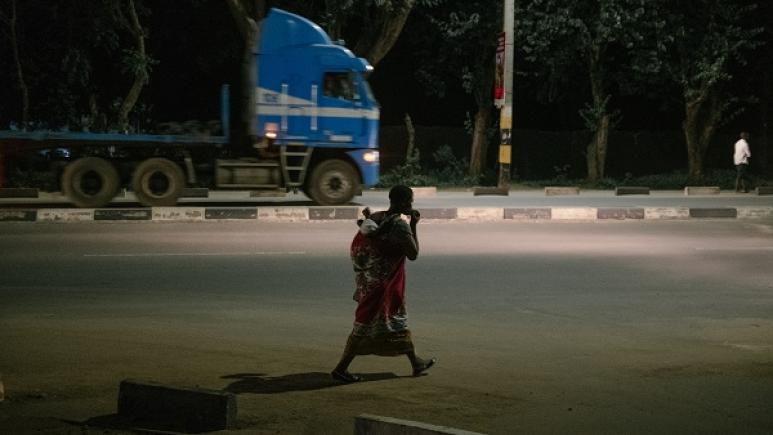HIV, sexual violence: the heavy toll on female sex workers in Malawi
According to UNAIDS (1), in 2019, female sex workers were 30 times more likely to be infected with HIV than the general female population.
"This figure obviously shows the overexposure of sex workers to HIV, but it does not tell us more about their experiences, their knowledge of their HIV status and other risks, or what they do to take care of themselves. Without this data, it is difficult to propose specific and adapted approaches in terms of prevention," notes Claire Bossard, epidemiologist at Epicentre.
From February to April 2019, Epicentre and Médecins sans Frontières (MSF) in collaboration with the Malawian Ministry of Health conducted a study among female sex workers in Nsanje, one of the most disadvantaged districts in Malawi, where a significant number of women are involved in sex work in male-dominated workplaces or along roadways. MSF provided HIV, Tuberculosis, and sexual and reproductive health (SRH) prevention and care services to female sex workers in this district between 2013 and 2020 in a program that included peers (2).
"We were able to interview women who rarely participate in studies, using a technique called Respondent Driven Sampling (RDS)," explains Claire Bossard, coordinator of the study.
After explaining the purpose of the study and obtaining their agreement, each participant was given two coupons which she was invited to use to recruit other female sex workers into the study. When one of them was enrolled, the initiator received compensation, and so on until the sample size was reached.
"This is a proven methodology for reaching hard-to-reach populations," says Claire Bossard.
A total of 363 women, 26% of whom were aged 13 to 19 were interviewed. Blood and urine samples were taken to determine their HIV status and the presence of any other sexually transmitted infections.
HIV prevalence increases with age
More than half of the participants were HIV-positive at the time of enrollment in the study. HIV prevalence increased sharply with age, reaching 88% for sex workers over 35, compared to 14% for those aged 13 to 19. Most HIV-positive participants reported knowing their HIV status (95%) and of these, the majority (99%) were already on antiretroviral (ARV) treatment. Among adolescents, UNAIDS target indicators were found to be lower than those observed among adults: 85% of HIV-positive adolescent girls knew their HIV status, all were on ARV treatment, and 63% had a suppressed viral load, compared to 84% of adults.
“The infection rate, although very high, is unfortunately not a real surprise, comments Claire Bossard. On the other hand, we did not know how many of them were aware of their infection. The study showed that knowledge was quite high, but that efforts should continue. In particular, the lower levels of viral suppression compared to the general population underscore the need for continued investment in health services and increased awareness of the importance of therapeutic adherence.”
The study also revealed a high prevalence of other sexually transmitted diseases such as syphilis (30%), chlamydia infection (12%) and gonorrhea (9%). If left untreated, these infections can have serious consequences and tend to progress to more severe forms in people with HIV.
Difficulties in preventing infections and unintended pregnancies
Although most of the sex workers surveyed had a good knowledge of how HIV is transmitted and an awareness of the risks they were exposed, more than half reported using condoms only occasionally.
"We know that sex workers often face difficulties in negotiating condom use with their clients, and that they are often paid more for unprotected sex, which can discourage condom use," said Lucy O'Connell, a sexual and reproductive health care nurse and key population advisor at the MSF South African Medical Unit (SAMU).
Unintended pregnancies were extremely common among the population: 72% reported they had experienced at least one unintended pregnancy. The high number of young single mothers and frequent voluntary terminations of pregnancy (despite the fact that abortion is still illegal in Malawi) underscore how critical knowledge of and access to quality contraceptive choices remain in this population. Nearly half of the participants (48%) also reported having experienced at least one episode of sexual violence in their lives, 14% of them by a police officer.
"Unfortunately, we see a lot of violence in our sex worker programs in the region, sometimes even going as far as murder, as we recently saw in Mozambique in late 2022," said Lucy O'Connell.
Moreover, these numbers are likely to be greatly underestimated due to denial, trauma or lack of recognition of sexual abuse.
"Like other highly stigmatized groups in society, sex workers generally avoid making themselves visible to authorities or refrain from accessing health services for fear of being identified, targeted and rejected. We know that sex workers don’t report or seek treatment for sexual violence for fear of being re-victimized," said Lucy O'Connell.
Thanks to MSF's efforts, in support of the Ministry of Health and other local partners, sex workers had access to prevention and care. As a result, they knew their HIV status, were on antiretroviral treatment, and many were virally suppressed, in some cases exceeding the UNAIDS 90-90-90 targets. But they remain a hard-to-reach, vulnerable, and high-risk group with very high prevalence and exposure to violence, so the work must continue and even go further.
"We must remove the barriers that still limit sex workers' access to prevention and care, listen to them to know which mode of delivery and follow-up is best for them, and work further to increase safe guarding and protection to stop violence against women and female sex workers," concludes Claire Bossard.







